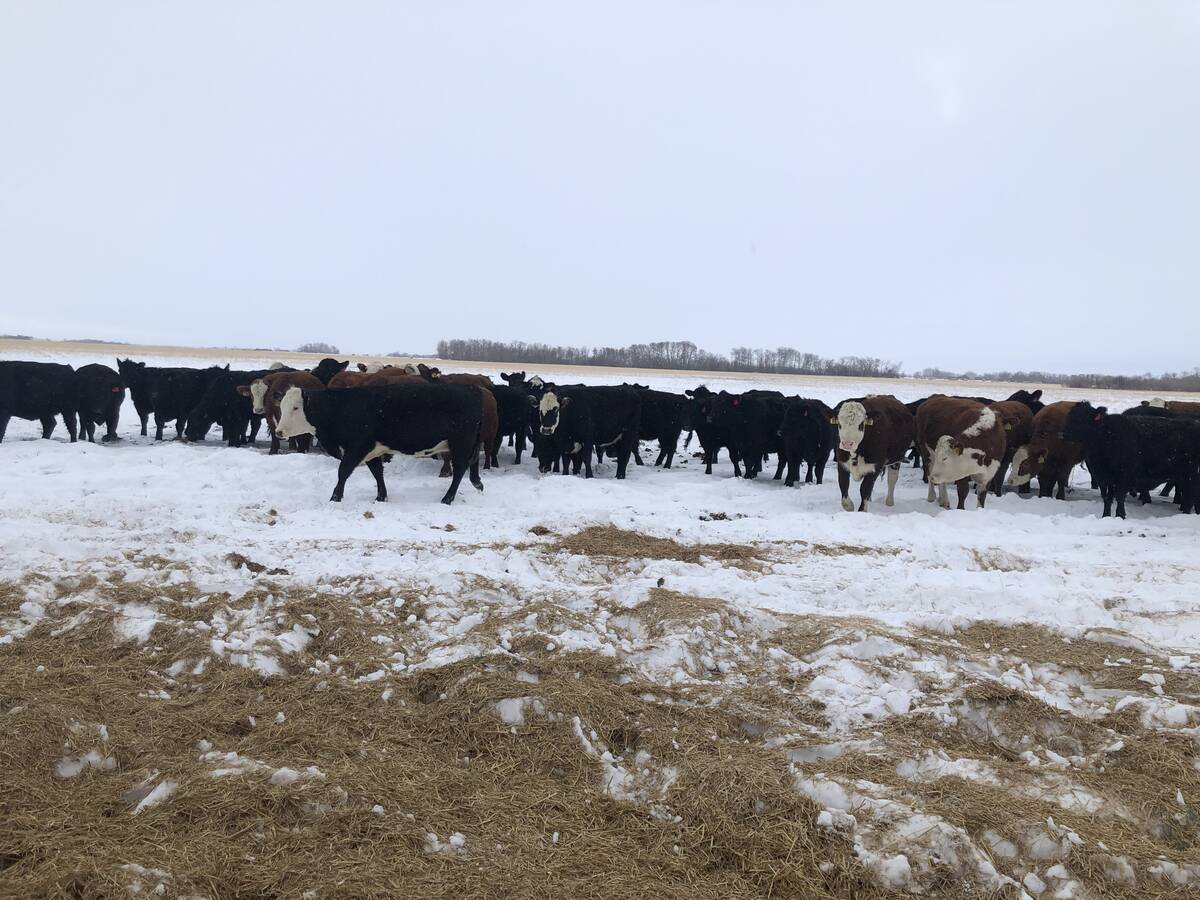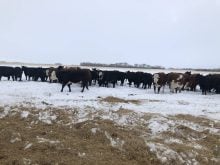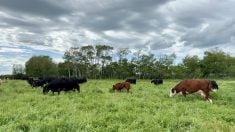In my September column entitled The Fall Run Has Started, I discussed the relationship between stress, feed intake and health status of newly weaned calves. To summarize that discussion, calves that are highly stressed due to weaning, transportation, mixing and processing typically have low dry matter intakes (DMI) and are susceptible to disease, particularly bovine respiratory disease. Ideally, our receiving program is designed to minimize any further stress and provides a nutritionally balanced ration that is readily consumed. With this column, I want to look at how we can reduce stress on arrival and what management steps we can take to help calves get onto full feed as quickly as possible.
[RELATED] Eliminating guesswork with an accurate chute-side BRD test
First let’s look at pen conditions. Upon arrival, calves should be housed in clean, dry pens that have a designated bedding area. Bedding should be provided, particularly during inclement weather. Slatted fencing (20 per cent porosity) should protect from prevailing winds.
Read Also

Picking the most efficient cows to rebuild your cow herd
A new cow ranking system to help beef farmers and ranchers pick the most efficient cows as they rebuild their herds.
Commercial lots designed to house cattle outdoors on dirt floors typically have pens that hold 150 to 300 head. Perhaps more important than the actual number of head is the pen space or square footage provided to each animal. Here again, we see a wide range across industry depending on feedlot design. For outdoor, earthen floor feedlots with bedding mounds, the industry norm is 250 to 300 square feet per head. Pens that provide for 150 to 200 square feet or less per head are likely to have greater issues with mud. Feedlots in Ontario and Quebec are typically indoor facilities with slatted or concrete floors. As a result, the pen area per head is significantly reduced (i.e. 30 to 40 square feet per head depending on size of the animal).
Recently, some western feedlots have used roller-compacted concrete for flooring when constructing new pens. This allows for an increase in pen density, provided adequate feed bunk space is available. Regardless of design, newly weaned calves need to be housed in a clean, dry environment and have sufficient space to lay down and move around without feeling undue stress due to overcrowding.
[RELATED] VIDEO: Is your livestock water supply up to the test?
Newly weaned calves also need access to a plentiful supply of clean water. This is particularly important from a feed intake perspective, as water and feed intake go hand in hand. Another critical design feature is the amount of feed bunk space per head. In this case, consideration of feeding management and animal type is important. For example, backgrounding calves on high-forage diets that are limit-fed or fed once a day should have 16 to 18 inches of bunk space. With two or more feedings or with heavier cattle on full feed, bunk space can be reduced to nine to 12 inches.
How quickly newly weaned calves reach full feed (i.e. 2.5 to 2.7 per cent DMI as a percentage of body weight) depends largely on how they are started. Remember that these calves have likely gone through the weaning, marketing and transportation scenario described above. For the most part, they have been off feed and water for two days or so and their rumen function (i.e. bacterial fermentation) is at a low ebb. Upon arrival, and if possible for the next three to four days, these calves should have access to good-quality, long-stem hay in specialized feeders or draped over the feed bunks. When placed in feed bunks on arrival, the hay is easily recognizable to the calves and entices them to eat out of the bunk. The hay also functions to stimulate rumen fermentation.
The makeup of the starter ration is also critical to getting stressed calves on feed. For example, a forage to concentrate ratio of 60:40 (DM basis) is common. Ideally, the forage component is a mix of silage and hay. Avoid rations with a DM percentage less than 50 per cent and urea-based protein supplements. In terms of nutrient specifications, a net energy of gain (NEg) value of 1.0 to 1.1 Mcal per kg of DM and a crude protein content of 13 to 13.5 per cent are typical. Macro and micro minerals, fat-soluble vitamins (A, D and E) and any feed additives are supplied via a supplement or micro-machine.
[RELATED] Interpreting a silage feed test
Calves are often started at 1.0 to 1.25 per cent of body weight on a dry matter basis. For a 500-lb. calf, this is approximately 5.5 lbs. of DM or 11 lbs. as fed (at 50 per cent ration DM). The initial feeding can be top-dressed on the hay lining the bunk. Following removal of the hay, DMI can be increased to two per cent of body weight as dictated by appetite. Further increases need to be more precise. For example, to increase DMI from 2.0 to 2.3 per cent of body weight, it is a good idea to restrict any increase in DM provided to a maximum of 10 per cent of the previous day’s DMI, every second day. Similarly, when moving DMI from 2.3 to 2.6 per cent of body weight, increases should be restricted to a maximum of five per cent of the previous day’s DMI, every second day, with increases above 2.6 per cent of body weight restricted to a maximum of 2.5 per cent of the previous days DMI, every second day.
I hope that the above discussion guides you in developing and implementing your receiving program for newly weaned calves. The take-home message — keep stress to a minimum!

















